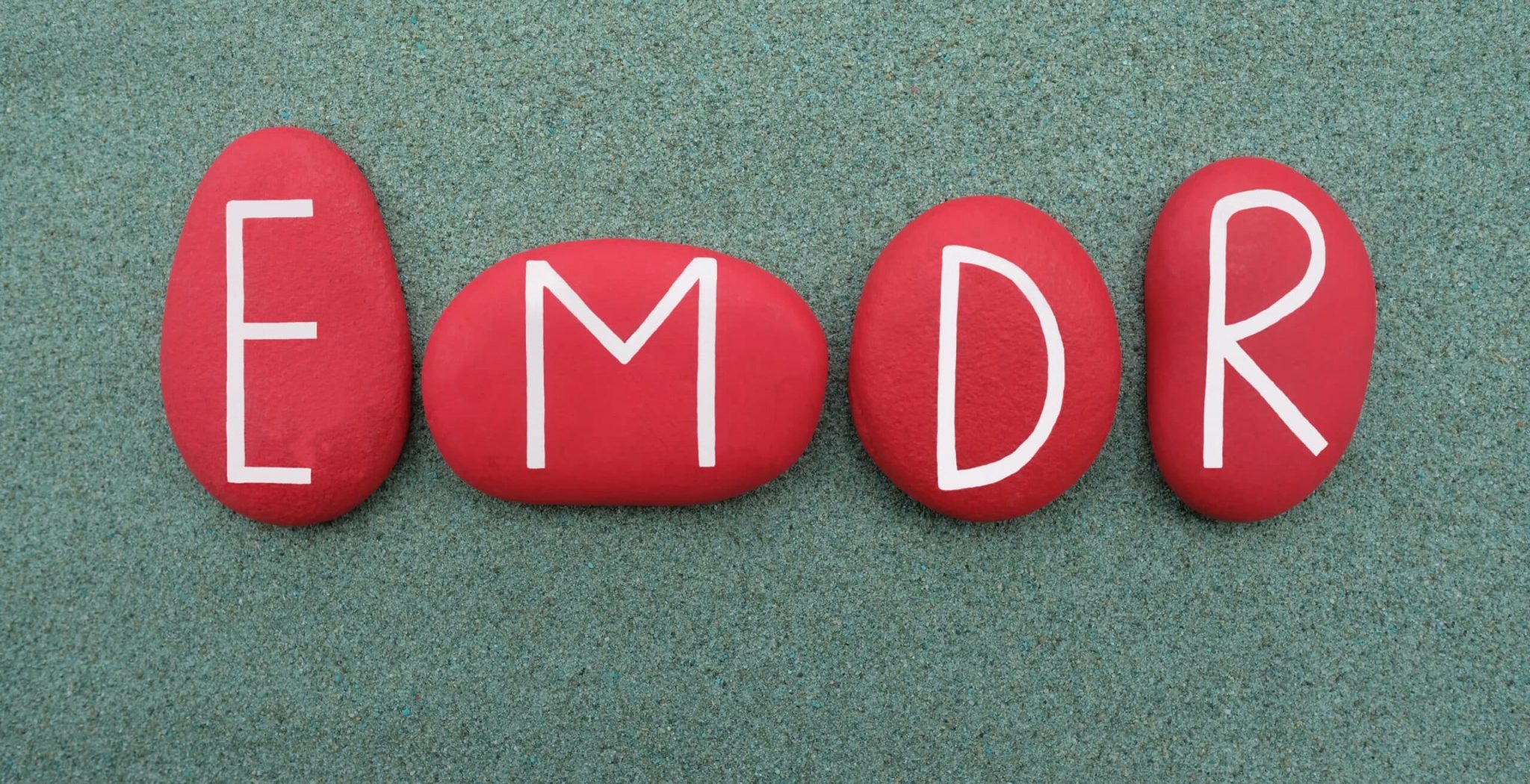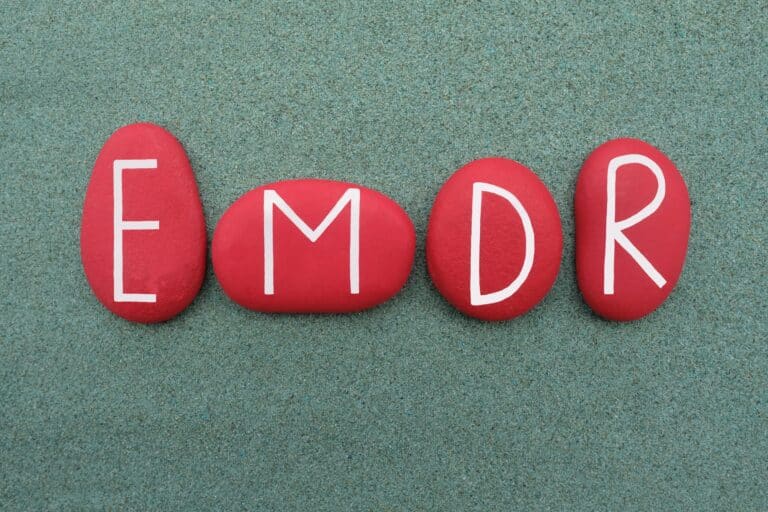Eye Movement Desensitization and Reprocessing (EMDR) has emerged as one of the most debated therapeutic approaches in modern mental health treatment. While millions of people worldwide have found relief through EMDR therapy, the treatment continues to generate intense discussion among mental health professionals, researchers, and patients alike. Understanding why EMDR remains controversial is crucial for anyone considering this treatment approach.
What Is EMDR Therapy?
EMDR is a structured psychotherapy approach developed by Dr. Francine Shapiro in 1987. The therapy combines elements of cognitive-behavioral therapy with bilateral stimulation—typically eye movements—to help individuals process traumatic memories and experiences. During EMDR sessions, clients recall distressing memories while simultaneously following their therapist’s finger movements or listening to alternating tones.
The treatment follows an eight-phase protocol designed to help clients reprocess traumatic memories, reducing their emotional intensity and helping develop healthier perspectives. EMDR therapy in Orange County has become increasingly popular as more people seek alternatives to traditional talk therapy for trauma disorders.
The Origins of the Controversy
The controversy surrounding EMDR began almost immediately after its introduction to the mental health field. Several factors contributed to the initial skepticism:
Accidental Discovery
EMDR was the brainchild of serendipity. One day in 1987 Francine Shapiro, a California psychologist in private practice, went for a walk in the woods. She had been preoccupied with a host of disturbing thoughts. Yet she discovered that her anxiety lifted after moving her eyes back and forth while observing her surroundings. This unconventional origin story raised eyebrows among professionals accustomed to treatments developed through systematic research.
Rapid Commercialization
Since its conception, Shapiro has been widely scrutinized for how she disseminated EMDR. Early on, she claimed that EMDR was a breakthrough therapy and trained clinicians to use it for PTSD while it was still labeled “experimental.” This aggressive promotion before extensive research validation created skepticism in the mental health community.
Mixed Early Research
Early efficacy studies showed mixed results, although these publications were mostly case studies and researcher narratives. The rocky start complicated EMDR’s reception by the field.
Current Controversies and Criticisms
Despite decades of research, EMDR continues to face several significant criticisms:
Unclear Mechanisms of Action
One of the primary points of controversy surrounding EMDR is the lack of clarity regarding how it works. While many clients report significant benefits, the exact mechanism of action behind EMDR’s effectiveness is not well understood. Critics argue that without understanding why EMDR works, it’s difficult to optimize treatment or predict outcomes.
This proposed mechanism has no known scientific basis. Several other possible mechanisms have been proposed: EMDR may affect working memory. If a patient performs bilateral stimulation task while remembering the trauma, the amount of information they can recall is thought to be reduced, making the resulting negative emotions less intense and more bearable.
The Eye Movement Question
Perhaps the most contentious aspect of EMDR is whether the eye movements are actually necessary. Last, researchers have found scant evidence that the eye movements of EMDR are contributing anything to its effectiveness. When investigators have compared EMDR with a “fixed eye movement condition”—one in which clients keep their eyes fixed straight ahead—they have found no differences between conditions.
This finding has led some critics to label EMDR as a “purple hat therapy”—EMDR has been called a purple hat therapy because any effectiveness is provided by the underlying therapy (or the standard treatment), not from EMDR’s distinctive features.
Training and Standardization Concerns
Another area of concern is the lack of standardization in EMDR training and practice. Different therapists may use varying protocols or techniques, leading to inconsistent treatment outcomes. This variability can make it challenging to determine what aspects of EMDR are most effective.
Some scholars have criticized Francine Shapiro for repeatedly increasing the length and expense of training and certification, allegedly in response to the results of controlled trials that cast doubt on EMDR’s efficacy.
Research Quality Concerns
Critics have raised questions about the quality of EMDR research. The Institute of Medicine’s 2008 report on the treatment of PTSD found insufficient evidence to recommend EMDR, and criticized many of the available studies for methodological flaws including allegiance bias and insufficient controls.
Some researchers argue that investigation into EMDR has been characterised by poor-quality studies, rather than tightly-controlled trials that could justify or falsify the mechanisms that have been proposed to support it.
The Evidence Supporting EMDR
Despite the controversies, EMDR has accumulated substantial research support:
Official Recognition
EMDR is recognized by numerous major organizations:
- In the United States, the Department of Veterans Affairs and Department of Defense list EMDR as a “best practice” in treating veterans experiencing PTSD.
- EMDR is recommended for the treatment of PTSD by various government and medical bodies citing varying levels of evidence, including the World Health Organization, the UK National Institute for Health and Care Excellence, the Australian National Health and Medical Research Council, and the US Departments of Veterans Affairs and Defense.
Research Effectiveness
Research on EMDR includes dozens of clinical trials, research studies and academic papers. It has official approval from the World Health Organization (WHO) and government organizations and agencies in the United Kingdom, Australia and Germany, among others.
Chen at al. (2015) looked at 11 scientific studies to find out whether EMDR or cognitive behavioural therapy (CBT) was more effective in treating PTSD. They found that EMDR was more effective overall.
Comparative Effectiveness
Systematic analyses published since 2013 generally indicate that EMDR treatment efficacy for adults with PTSD is equivalent to trauma-focused cognitive and behavioral therapies (TF-CBT), such as prolonged exposure therapy (PE) and cognitive processing therapy (CPT).
Common Misconceptions About EMDR
Much of the controversy surrounding EMDR therapy stems from lack of knowledge and understanding of what is actually happening during treatment. Several misconceptions contribute to the ongoing debate:
It’s Not Evidence-Based
While debates continue about mechanisms, EMDR is a highly effective treatment for trauma and other psychological dysfunction. However, it’s important to keep in mind that everyone responds differently to treatment, and there is no “cure” for trauma. That said, systematic reviews and controlled study experiments rate the success rate of EMDR as very high, and many people who undergo treatment find their symptoms improve significantly.
It’s Just Dissociation
Other reasons individuals may consider EMDR therapy controversial is that they do not believe it is actually helping patients heal from their trauma – they believe that EMDR is simply a form of disassociating from the trauma that occured. However, research suggests EMDR actually helps integrate traumatic memories rather than avoiding them.
It Will Make Things Worse
Others worry, despite the proven benefits, that EMDR will actually have the opposite effect. They believe that there is a chance for EMDR to make the symptoms permanently worse. While temporary increases in distress can occur during processing, research doesn’t support long-term worsening.
Potential Side Effects and Risks
While EMDR is generally considered safe, like any therapy, it can have its share of side effects. These are usually mild and temporary, but it’s important to be aware of them. Some individuals may experience adverse side effects during or after EMDR sessions. These can include feelings of anxiety, lightheadedness, or even headaches.
Some individuals may experience emotional distress during or after EMDR sessions. This can include heightened anxiety, feelings of sadness, or discomfort as they recall traumatic memories. It is important for therapists to prepare clients for these potential emotional responses.
Common side effects may include:
- Vivid dreams or nightmares
- Temporary increase in anxiety or emotional intensity
- Physical sensations like headaches or lightheadedness
- Fatigue following sessions
EMDR vs. Other Trauma Therapies
The controversy around EMDR often centers on how it compares to established treatments like CBT therapy and behavioral therapy. So, now to the bottom line: EMDR ameliorates symptoms of traumatic anxiety better than doing nothing and probably better than talking to a supportive listener. Yet not a shred of good evidence exists that EMDR is superior to exposure-based treatments that behavior and cognitive-behavior therapists have been administering routinely for decades.
However, EMDR offers several potential advantages:
- It tends to work faster than other forms of therapy. People receiving EMDR typically start seeing results much sooner than with other forms of therapy.
- It involves less homework. Other forms of therapy typically involve journaling or other types of homework outside of your sessions. EMDR usually involves only writing down any thoughts or ideas you want to bring up at your next session.
- It’s usually less stressful. EMDR focuses on processing and moving past your trauma. Other methods involve having you describe and even relive negative events.
Who Benefits Most from EMDR?
EMDR has shown effectiveness beyond PTSD treatment. Research indicates it can help with:
- Anxiety disorders
- Depression
- Phobias and panic disorders
- Complicated grief
- Childhood trauma and what is abandonment trauma
De Roos et al. (2017) carried out a study with children aged 8-18 who had developed PTSD after a single traumatic event. They found that EMDR was just as effective as cognitive behavioural writing therapy in reducing PTSD symptoms, and that EMDR reduced the children’s symptoms more quickly. About 92% of children no longer had PTSD after around four sessions of EMDR.
The Bottom Line: Is EMDR Worth It?
The controversy surrounding EMDR reflects the complex nature of trauma treatment and the ongoing evolution of mental health care. While debates continue about how EMDR works, the evidence consistently shows it can be effective for many people struggling with trauma-related symptoms.
While some find great relief through EMDR, others question its scientific basis and how it compares to traditional therapies. Critics argue that more research is needed to fully support EMDR’s claims. This lack of agreement among professionals contributes to the ongoing debate about its place in treatment options.
For many individuals, the controversy matters less than the results. It’s not uncommon to hear testimony that EMDR was the only treatment to help some heal from their trauma. Several public figures have shared these kinds of experiences, such as Prince Harry who filmed an EMDR session for his new mental health docuseries, and Sandra Bullock who shared her story on Red Table Talk.
Finding Quality EMDR Treatment
If you’re considering EMDR therapy, it’s crucial to work with properly trained and certified therapists. The so-called “dangers” of EMDR therapy arise when young people are treated by someone who isn’t fully trained and certified in this approach. For example, those not properly trained may not appropriately follow the eight phases of EMDR therapy delivery or give clients the skills and toolkit needed to cope with emotions or thoughts that occur during treatment.
Look for therapists with:
- EMDRIA certification
- Specialized training in trauma treatment
- Experience with your specific concerns
- A comprehensive approach to mental health
Professional Support for Trauma Recovery
At SoCal Sunrise Recovery Center, we understand that trauma affects everyone differently, and there’s no one-size-fits-all approach to healing. Our team of experienced clinicians offers various evidence-based treatments to help individuals process traumatic experiences and develop healthier coping strategies.
Our comprehensive approach includes:
- Individual psychotherapy
- Trauma-focused treatments
- Holistic healing approaches
- Specialized therapy programs
Whether you’re dealing with PTSD, anxiety, depression, or other trauma-related symptoms, our compassionate team is here to help you find the path to healing that works best for you.
Take the Next Step Toward Healing
If you’re struggling with the effects of trauma and wondering whether EMDR or another therapeutic approach might be right for you, don’t wait to seek help. The journey to healing begins with a single step, and professional support can make all the difference in your recovery process.
Contact SoCal Sunrise Recovery Center today at 949-284-7325 to speak with a member of our treatment team. We’re here to answer your questions, discuss your options, and help you find the path forward that feels right for you.
Remember, healing is possible, and you don’t have to face this journey alone. With the right support and evidence-based treatment, you can overcome the effects of trauma and reclaim your life.
If you or someone you know is experiencing thoughts of self-harm or suicide, please reach out for immediate help. Contact the National Suicide Prevention Lifeline at 988 or seek emergency medical attention.
Additional Resources:
- What Is EMDR Therapy?
- Understanding PTSD from Narcissistic Abuse
- What Is Delayed Onset PTSD?
- Military Sexual Trauma
References:
- American Psychological Association. (2017). Clinical Practice Guideline for the Treatment of Posttraumatic Stress Disorder (PTSD) in Adults. https://www.apa.org/ptsd-guideline/
- World Health Organization. (2013). Guidelines for the management of conditions specifically related to stress. https://www.who.int/publications/i/item/9789241505406
- Department of Veterans Affairs. (2017). VA/DoD Clinical Practice Guideline for the Management of Posttraumatic Stress Disorder and Acute Stress Disorder. https://www.healthquality.va.gov/guidelines/MH/ptsd/
- EMDR International Association. (2023). What is EMDR? https://www.emdria.org/about-emdr-therapy/
- National Institute of Mental Health. (2019). Post-Traumatic Stress Disorder. https://www.nimh.nih.gov/health/topics/post-traumatic-stress-disorder-ptsd/






